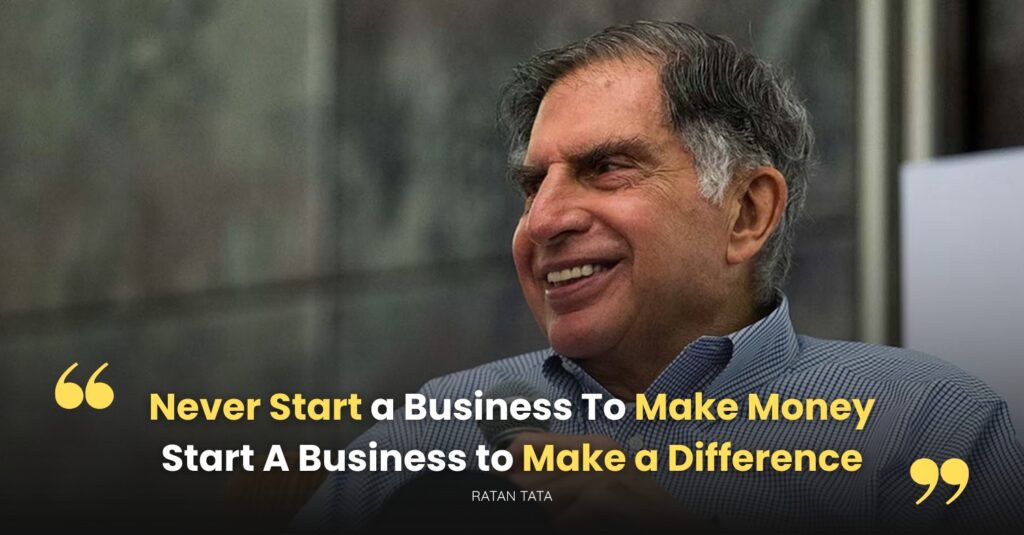RATAN TATA | Journey from Quiet Beginnings to Building a Nation’s Fortune
The Seed of Humility (1937–1959) Ratan Naval Tata was born in 1937 into one of India’s most respected families. But his childhood was far from the story of privilege people imagine. His parents separated when he was only ten, leaving him to be raised by his grandmother, Lady Navajbai Tata. That fracture, quiet yet deep, planted early seeds of humility and resilience in his character. Unlike many heirs of business empires who grow up shielded by comfort, he grew up with the silent company of solitude, learning empathy before ambition. He studied at Mumbai’s Campion School and the Cathedral and John Connon School, before leaving India to pursue architecture at Cornell University. Architecture was not the obvious choice for someone who would one day run one of the world’s largest conglomerates. But it revealed a crucial truth about him: he followed curiosity over convention. He wasn’t in a rush to hold boardroom power; he wanted to design, to create, to understand structure and beauty. That vision of design would later define his leadership — because he didn’t see Tata merely as a company, he saw it as a structure built to last beyond centuries. In his years abroad, Ratan Tata worked odd jobs, managed his own expenses, and lived like any other student. These experiences became his foundation of humility, ensuring he never lost sight of ground realities even when he sat on top of billions. Later, he also attended the Advanced Management Program at Harvard Business School, where he sharpened his business perspective. But even then, what set him apart was his architect’s eye — he understood that lasting legacies, whether buildings or businesses, were not built on speed but on strength. There is a certain wit in how life prepared him: while most heirs of industrial dynasties were memorizing balance sheets, Ratan Tata was studying balance in design. It was almost as if destiny wanted him to learn that business is not only about profits but about harmony — between people, ideas, and values. What I see in this part of his life is that greatness is rarely born in comfort. His early hardships gave him empathy, his education gave him perspective, and his choices gave him authenticity. I learn that success is not about following the obvious path, but about following curiosity with discipline. Humility, independence, and resilience are not weaknesses — they are the silent capital on which real leadership is built. Learning the Ground (1962–1970) When Ratan Tata returned to India in the early 1960s, it would have been easy for him to walk straight into an office with air conditioning, secretaries, and power waiting at his fingertips. After all, he was the heir of a legacy that shaped India’s industrial backbone. But instead, he chose something unusual — he joined Tata Steel, not as an executive, but as a trainee on the shop floor. Imagine the sight: the future head of a multi-billion-dollar conglomerate working alongside factory workers, shoveling limestone, handling blast furnaces, and sweating in the same dust as those who had never seen a boardroom in their lives. This was no mere formality. It was his way of understanding the true heart of a business — the men and women who built it every day. There is a profound philosophy hidden here. Leadership is not a throne you sit on; it is a ground you stand on. By working at the very roots of the Tata empire, Ratan Tata learned the rhythm of industry not from reports or presentations, but from the clang of steel and the grit of labor. He saw firsthand the challenges of operations, the discipline of teamwork, and the dignity of labor. These were not numbers on a spreadsheet; they were stories of sweat, ambition, and survival. This period also tested his patience. While many contemporaries chased faster success, Ratan Tata immersed himself in learning. His failures at Nelco and Empress Mills later in the decade also began here — bold attempts at reviving companies that did not succeed at the time. Yet, even those failures were not wasted. They were investments in wisdom. As he once said, “I don’t believe in taking the right decisions. I take decisions and then make them right.” By 1970, what he carried wasn’t the arrogance of entitlement but the quiet authority of experience. He had not just seen the business from above but felt it from within. What I see in this part of his life is the humility to learn from the ground before reaching for the sky. His willingness to work where others avoided shows that true leadership is not inherited — it is earned through sweat and respect. I learn that every entrepreneur must first become a student of their own enterprise, not through books alone but through the rawness of reality. Failure, too, is not the end but a tuition fee for greatness. The Reluctant Heir (1970–1991) Every empire has an heir, but not every heir wants the throne. Ratan Tata’s journey through the 1970s and 80s was marked less by triumphs and more by trials. His early experiments with leadership did not bloom into success — in fact, they wilted in public view. One of his first major assignments was Nelco, a struggling consumer electronics company within the Tata fold. With vision and energy, he tried to revive it, betting on India’s future appetite for technology. But the timing was wrong, the environment hostile, and Nelco eventually collapsed. Another test came with Empress Mills, a textile unit that he attempted to save with new strategies. Once again, despite his efforts, the mill shut down. To critics, these failures were proof that the young Tata was not cut out for leadership. To Ratan Tata himself, they were harsh but essential lessons in the realities of Indian industry. The whispers began. Could he really fill J.R.D. Tata’s shoes? Was he too soft, too polite, too untested for the brutal world of business? Even within the Tata empire,


